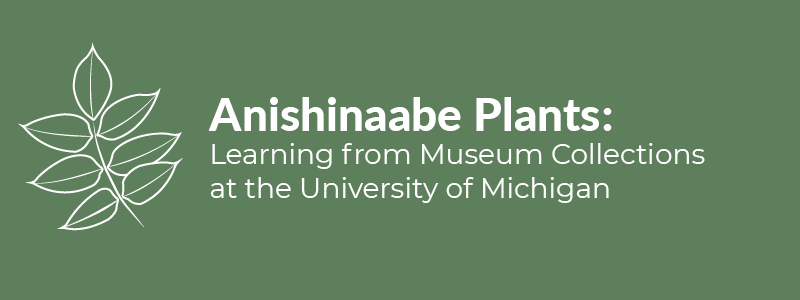Woven Cedar
By the time of Jones’ visit to the Garden River Reserve in 1933, many community members were making baskets to sell to tourists in stores, some of which were owned by Anishinaabe families. Though some items, like black ash baskets, were widely available for sale, Jones observed a rarity of cedar products in Anishinaabe communities in Michigan and Ontario. After noticing a small cedar bark mat in the store of Mrs. Mary Belanger, Jones commissioned her to make a large cedar mat with traditional materials and methods. Mary Belanger was assisted by her sister, Sophia, and brother-in-law, Neil Boyer. While observing and at times assisting them, Jones collected several cedar items to be curated at UMMAA to illustrate all stages in the manufacturing process.
To learn more about the process of preparing and weaving cedar, visit the Cedar Mat Making page
Nookomis Giizhik - Grandmother Cedar
“Being able to make a mat out of the bark of cedar is an important part of izhitwaawin [Anishinaabe way of being], but if we do not know how to properly address the cedar to ask for her physical and spiritual assistance, then we will be missing a key component of inaadiziwin [Anishinaabe culture, teachings, customs, and history]. Without this vital information, our cultural programs are only craft workshops or art classes where participants learn skills without understanding the cultural context and the worldview out of which those skills come.“ Geniusz 2009: 158.
For the Anishinaabek, white cedar is Nookomis Giizhik, or Grandmother Cedar. Today, Wasson (Renée) Dillard, an award-winning Anishinaabe (Odawa) natural fiber artist and teacher, helps community members learn about the importance of Nookomis Giizhik through workshops and community projects.
Visit the Cedar Mat Making page to learn more about Dillard's work and the cedar mat woven by the Belanger and Boyer family in the 1930s.


